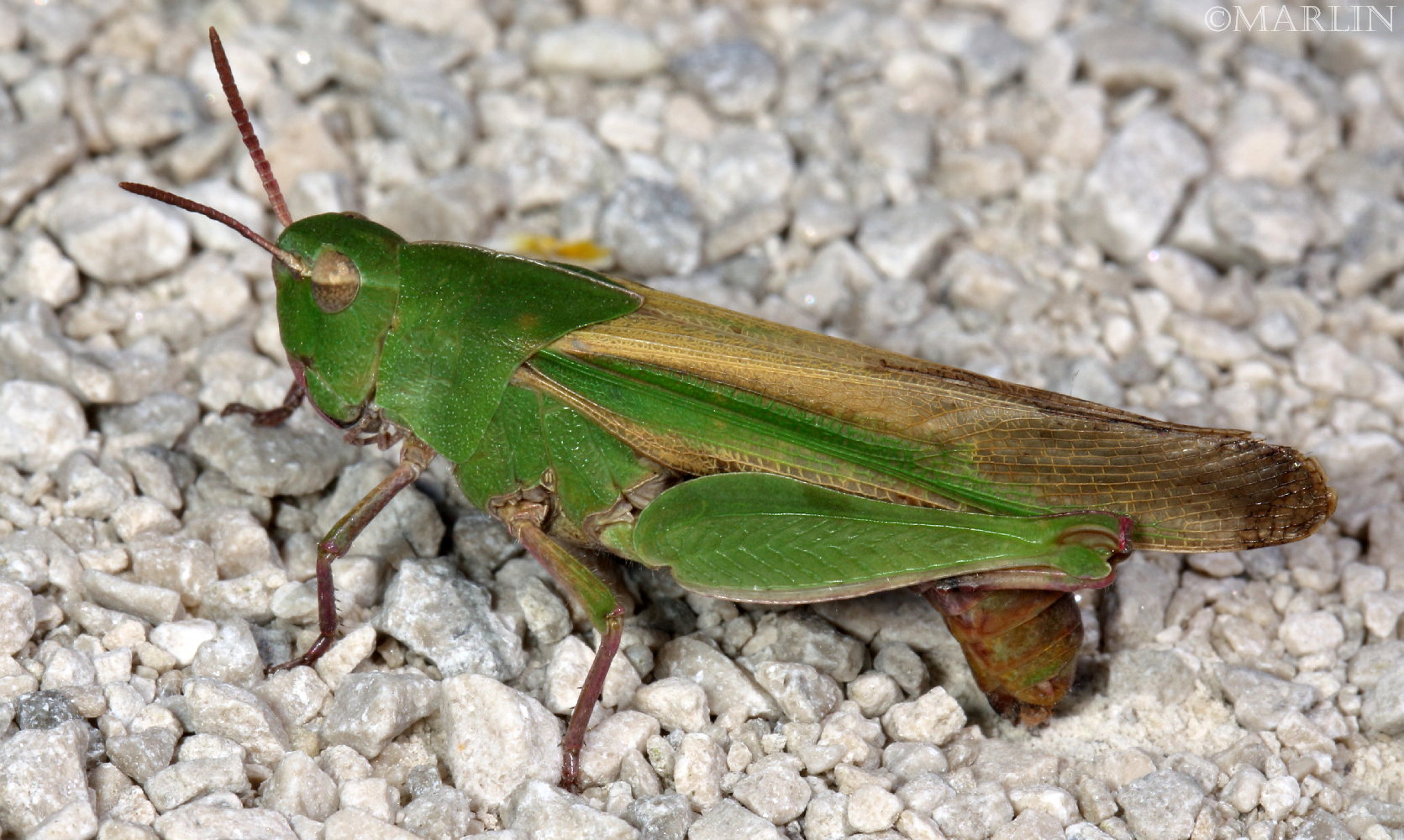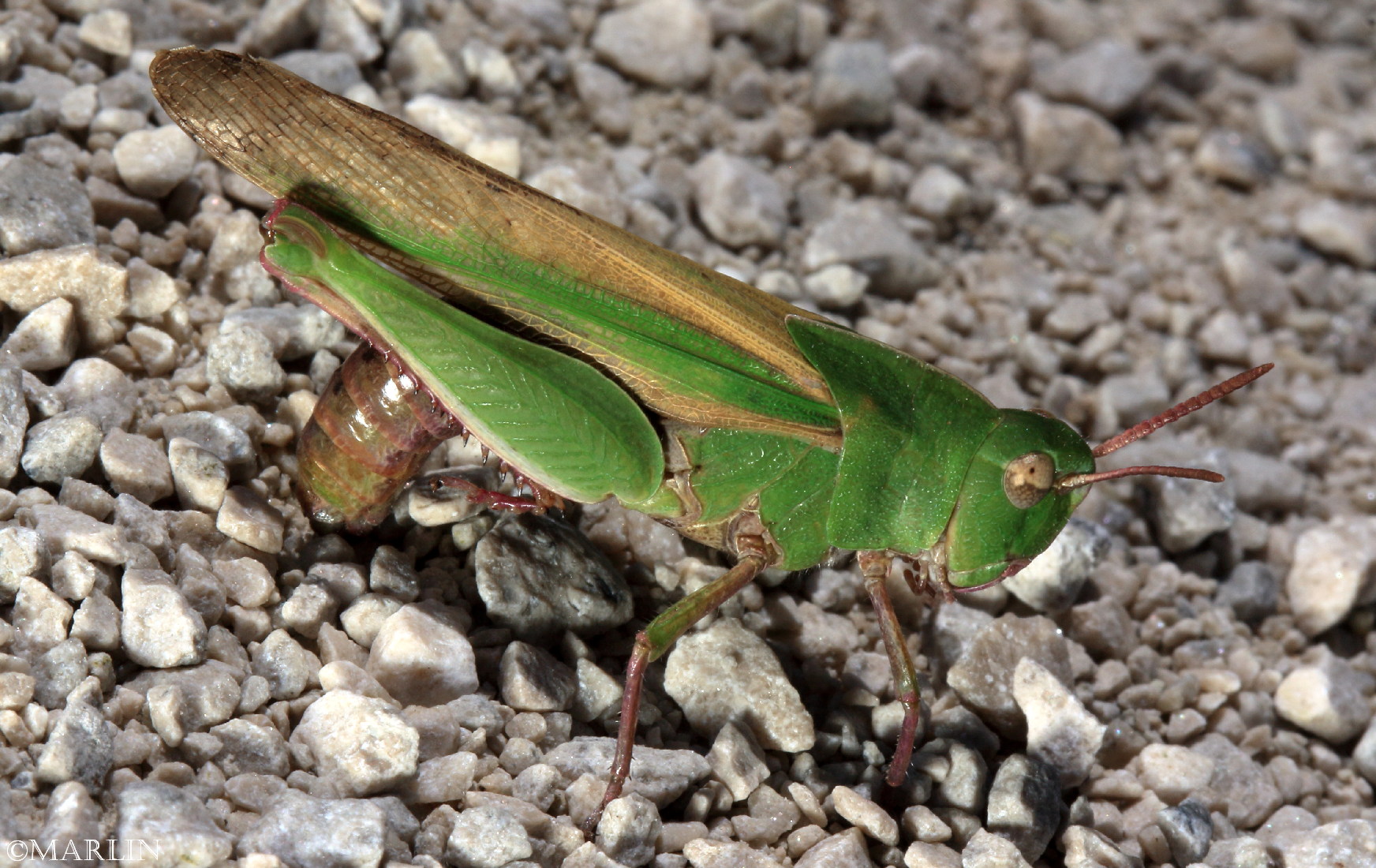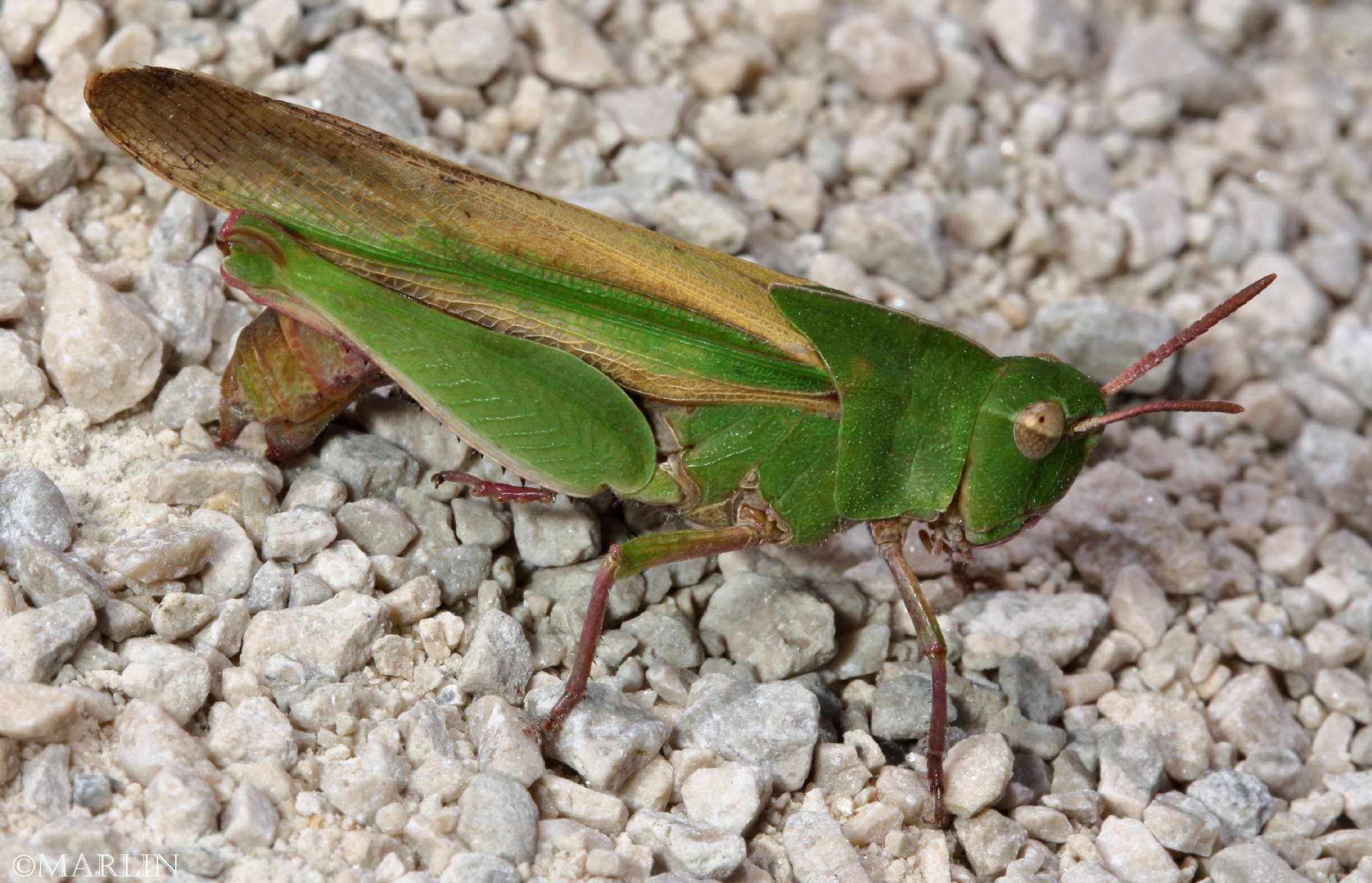Northern Green-striped Grasshopper – Chortophaga viridifasciata
Order Orthoptera – Crickets, Grasshoppers & Katydids / Family Acrididae
Live adult female grasshopper photographed in the wild at DuPage County, Illinois, USA.
The green-striped grasshopper ranges from Newfoundland and Labrador to British Columbia in Canada, south all the way to Central America. Feeding mostly on grasses with a preference for succulent plants, the greenstriped hopper is normally found in such low numbers as to be economically insignificant as an agricultural pest [2].
Favored foods vary by location, but the greenstriped has cosmopolitan tastes in grasses, known to feed on Kentucky bluegrass, foxtail barley, western wheatgrass, quackgrass, little bluestem, junegrass, needleleaf sedge, Penn sedge, and forbs European sticktight and annual sowthistle [2].

Grasshoppers have antennae that are almost always shorter than the body, and short ovipositors. Those species that make noise usually do so by rubbing the hind femurs against the forewings or abdomen (stridulation), or by snapping the wings in flight. Tympana, if present, are on the sides of the first abdominal segment. The hind femora are typically long and strong, fitted for leaping. Generally they are winged, but hind wings are membranous while front wings (tegmina) are coriaceous and not used for flight.
Females have two pairs of valves ( triangles) at the end of the abdomen used to dig in sand when egg laying.

The first fossil records of the order appear in the upper Carboniferous, or Pennsylvanian era, 310 – 290 million years ago.

Order Orthoptera – Crickets, Grasshoppers & Katydids
There are more than 20,000 species in the order Orthoptera. These diverse insects are found worldwide, although their numbers are concentrated in the tropics.
Beetles Index | Longhorns | Leaf Beetles | Soldier | Blister | Lady | Scarab
Tree Encyclopedia / North American Insects & Spiders is dedicated to providing family-friendly educational
resources for our friends around the world through large images and macro photographs of flora and fauna.

